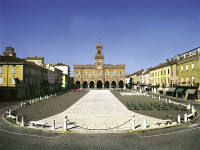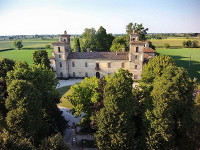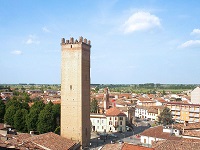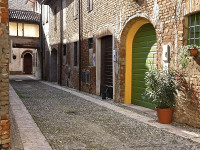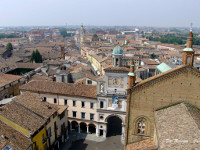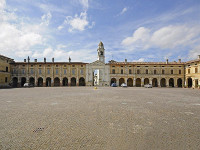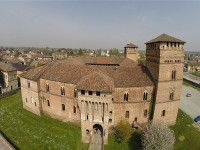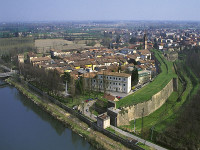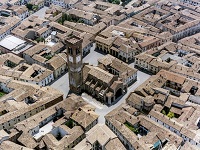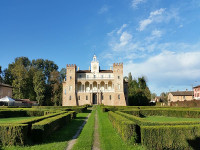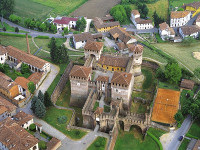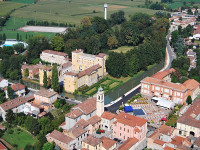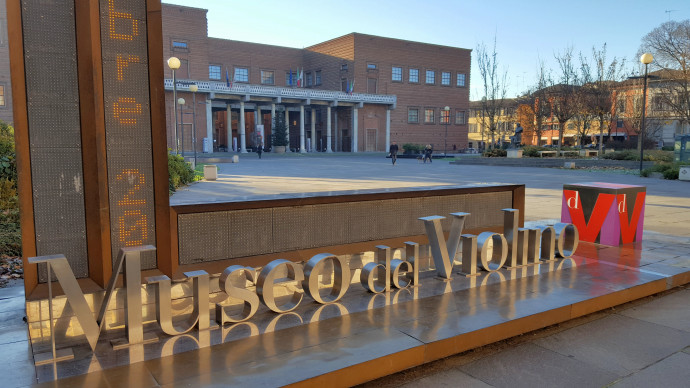- Itinerari
CASTLES AND FORTIFIED CITADELS
From Pizzighettone to Soncino
The route crosses entirely Cremona’s Province, from the Southern to the Northern part. It goes through some small villages (Pizzighettone and Soncino) which are rich in history and characterized by some important fortresses which are still in good conditions.
Among the most beautiful places of the itinerary there are some parts of the river Adda and Oglio, some natural river valleys and the hydraulic joint Tomba Morta.
Pizzighettone, awarded by the TCI (Italian Touring Club) with the “orange flag” title, connects its origins to the river Adda. This river characterizes Pizzighettone’s historic center dividing it in two parts. The 16th Century walls surround completely the historic center on both the banks. The walls are 2 km long, 12m high, 15m wide and 3,60m thick. The Casematte are covered spaces inside of the walls connected one to the other (the only example in Europe). In the village it is worth a visit the S. Bassiano church, the most ancient Romanic-Lombardic church (which contains some paintings by Bernardino Campi) and the Torre del Guado, which has a square and crenelated plan. This is the only integral part of this ancient castle which was the place where (in 1525) Francesco I di Valois, King of France, was imprisoned.
Along the valley of the river Serio Morto, after the villages of Formigara, San Bassano and Cappella Cantone, you can reach Soresina, a lively little village famous for its monumental Graveyard, the Public Astronomic Lab, the Social Theater and the Sala del Podestà with the 16th century paintings and the big chimney. Riding along the bump of Soresina and once you have crossed the navigli (more information about Genivolta in the description of the route 1) you can reach the limit of the Province (following the Oglio river) and then Soncino, which was included in the list of the most beautiful villages in Italy. Its walls are impressive: they are its main characteristic. The village looked defended by the walls and by a fortress already in a drawing of the 15th Century.
Thanks to these elements the village maintained the ancient urban plan: the walls run for 2km and they are sometimes interrupted by a regular series of towers and by three entrance doors. The Sforza fortress was built in 1473 and then restored in the 16th Century when it became the Summer house of the Stampa family. Also the rest of the village is worth a visit because of its palaces, churches, courtyards and ancient cloisters. The ex spinning mill Meroni is very important for the village because of its architecture, the high smokestack in tile leaning on the walls and the palace Azzanelli (second half of the 15th century), richly decorated in tile and built by a family of rich merchants who had a business in the woolen cloths. In the square of the village there are the famous municipality palaces: the civic tower, the Palace Podestà, the New Palace and the Clock Tower with the automatons, the so-called “matei”. Among the most important buildings, the Printers’ House. It contains the memories of the ancient Jewish printing factory and the first complete edition of the Bible with mobile characters and with the introduction of the vowels (1488). Out of the walls there is the Church Santa Maria delle Grazie, the result of the patronage of the Sforza and Stampa family: the building is considered a treasure box of the Renaissance Lombardy painting school for its important frescoes and for the decorations in tile.
From Soncino you can take the River Oglio cycling route which crosses, in Cremona’s territory, the Park Oglio Nord and the Park Oglio Sud.
Mostra cosa c'è nelle vicinanze:
